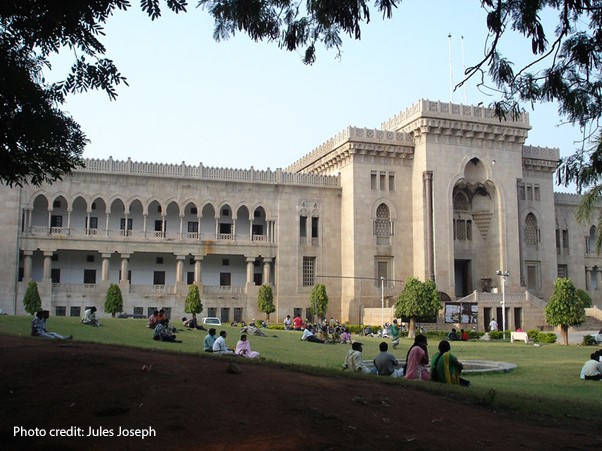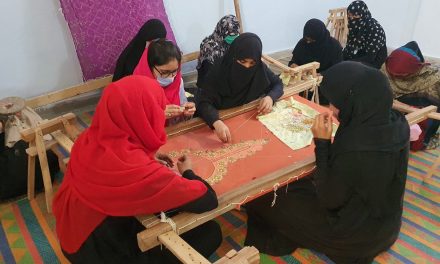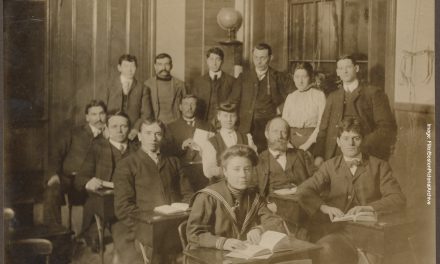This blog was written by Nupur Jain, Savitribai Phule Pune University, India as part of a British Council funded research project: ‘A study to further gender equality in Higher Education in India‘. It was originally published on the university website on 5 April 2022.
With neoliberalism and the increased visibility of women in higher education, there are different ways in which covert and overt forms of discrimination have become normalized in spaces of higher education. This has further complicated the ways in which the question of women’s representation and leadership in higher education have re/emerged. Public and private institutions in India in the space of higher education are playing significant role in providing access to education. This site gets further complicated with the increasing number of educational institutions run by different trusts / philanthropic organizations / minority institutions etc. A cursory look at different types of institutions points out the ways in which they intersect when encountered by shifts on the landscape of higher education in contemporary India.
My observations for this paper are based on my involvement in a project on gender equality in higher education, conducted by SPPU, India and Brunel University, London. We know that the site of higher education is fraught with major shifts and challenges. Despite gender parity, many overt and covert forms of discrimination are intertwined with everyday forms of institutional and familial oppression across institutions. While looking at various institutions, it becomes important to contextualize them within the larger contemporary Indian politics, and especially in a comparative framework with other institutions. These institutions intersect at multiple levels – socially, politically, regionally, culturally and so on. Some pioneer public institutions of higher education have set historical precedents for encouraging women to gain education and become self-reliant. But these spaces come with its own set of challenges. It is visible in how differential treatment is meted out to women students, certain spaces are demarcated as out of bounds, and notorious rules and uncompromising hostel timings are imposed on them. This demonstrates how women students continue to protest and demand recognition for their fundamental and constitutional right to education by challenging patriarchal norms and sexual control over women’s bodies.
In the process of working on the project and especially mapping it from a gendered perspective, some crucial themes emerged in the context of how exclusion operates in higher education. One such way in which this occurs is through spatial segregation. This translates into different kinds of exclusions and discriminatory practices for different actors in higher education such as teachers, students or non-teaching staff. The capacity to claim equitable treatment in the campus and university is directly contingent on the access to different spaces, specifically for women. This also points to how exclusion becomes structural in many ways.
Over the years, the landscape of higher education has evolved with the influx of modernity, globalization and neo-liberal policies. Policies have been specifically aimed at making higher education more ‘valuable’ by making it more expensive, and therefore elitist. This has coincided with the growth and proliferation of many private institutions of higher education in India. With this the vision and goals of educational institutions have also shifted. Private universities emulate ideas of creative philanthropy, while generating surplus amounts of profit. In this process, we also see how institutional excellence gets demarcated through the rigid boundaries of acceptable and non-acceptable student behaviour.
It is common knowledge that the overall space of higher education has a largely celebratory attitude towards disciplines like Technology, Engineering and Sciences. Social sciences face issues at multiple levels, ranging from generating funds to showcasing positive performance. Despite sincere and rigorous efforts to include Arts and Humanities within the larger fold of mainstream, respectable educational streams and jobs, spaces like student unions in institutes remain dominated by students pursuing professional degrees. In addition to this, most departments are male-dominated. Women professors from social science departments are expected to be available anytime, for any extra work. They are expected to be more suited for teaching gender, by virtue of being women. We need to understand this as a part of a larger structural issue, because in a culture where male teachers have their own cults and are looked up to be fashionable and cool despite being young and less experienced, female teachers get further de-intellectualized. I look at this as ghettoization at the level of pedagogy and teaching.
In spaces of privatized higher education, this ghettoization is also seen at the level of curriculum. For example, a history syllabus / curriculum will be taught without any reference to or texts written by female historians. This reflects not only the kind of courses that are taught, but the manner in which they are taught as well. Why is gender component restricted to only certain subjects and papers? This also raises the question about who then teaches these papers. Women professors might be deeply invested in teaching and learning gender, but why should they be the only ones who have to teach it? This not only puts extra pressure on the female professor to ‘deliver’ what is expected out of a gender curriculum, but also marks the fragile case of how gender gets gendered in academia. Privatization of education along with neoliberal policies are dismantling the very disciplinary foundations by replacing social science disciplines with more marketable subjects. This affects how institutions and its various actors make interventions in the space of higher education.
Contextualizing the NEP
In the past two decades, India has witnessed volatile shifts in higher education because of caste politics as well, with states mobilizing the marginalized castes for electoral purposes. Their influx into higher education with promises of upward mobility and employment opportunities needs to be problematized. Many students from marginalized backgrounds are first generation learners with multiple challenges. In this context, state intervention through policies like the NEP actually end up hindering their progress. The policy makes the neoliberal process of de-politicization more institutionalized. For example, the exit option in NEP pushes the first-generation learners, and economically and socially weaker students to leave education at the first available chance. This is unfortunate, given how difficult it is for them to enter and survive in these spaces in the first place. On the other end, private institutes’ alignment with the NEP becomes ‘valuable’ at many levels. Collaborations between state, educational institutions and corporate / multinational companies get lauded as exemplary milestones. Women students often become the tokens of this faux empowerment, thus derailing an essential conversation about the many illusive forms of ghettoization that occur on the site of higher education.
Reading Between the Various Forms of Covert and Overt Ghettoization
It is important to look at these various continuities and discontinuities to point out the covert and overt forms of ghettoization and discrimination that exist across the continuum of higher education – public universities on one end, and private institutions with modern state of the art infrastructure and western, Americanized model of education on the other. The forms of exclusions in public institutions that garner dissent and also massive media coverage become hyper-visible in a particular context. What makes it visible is the political currency that these universities hold in contemporary India, where right wing majoritarianism and surveillance of minorities has been unleased aggressively amidst the larger nation building project. One also needs to contextualize this in the operational limits of state led politics and violence through extra-constitutional outfits who operate with complete impunity at the local level
So when questions of gender come up in such state public universities through, say, questions of gendered and spatial segregation, and ghettoization, it creates the dichotomy of good space / bad space wherein women students contaminate the pure space of higher educational institutes. This ends up reproducing the rhetoric of how minority religions are patriarchal. Gender gets relegated to being a cultural problem. To be precise, it becomes a problem of a ‘distinct cultural milieu’ that is the problem of the minorities. Invariably then, in a context where we see increasing and dangerous eruption of violence towards the minorities in India, any assault on the identity of student becomes ‘more urgent’ than women’s issues. Women’s problems get relegated as non-issues when their own men are being beaten.
In this context, there is a greater need to assess the presence of women in higher education spaces. The Department of Women and Gender Studies, Savitribai Phule Pune University and Brunel University have collaborated on a project that intends to further Gender Equality in Higher Education. The next section uses data from a survey designed and conducted for the project. The survey was disseminated across ten participating higher education institutions in the research study in five states of India -Maharashtra, Kerala, Rajasthan, Uttar Pradesh, and Jharkhand. Although the sample is not representative of the state enrolment numbers and overall population, it gives us a clue to understand the present scenario. As John explains while discussing deliberations with the task force, 56% of women marry before the age of 21 years, and the trend seems to be less likely to subside with change in the law. Thus, reading the survey data with the proposed bill would help in understanding the present trends in age at marriage of women on the site of higher education. Why does the age at marriage debate get linked to higher education in the present context, when in the past it was strongly limited to the rate of maternal mortality and population control? Does attaining higher education mean women become empowered? Does higher age at marriage translate to employability and lesser dependence on ‘men’ as cited as one of the aims and objectives in the bill?
What I want to point out here is that for the marginalized and minorities, the question is not so much therefore about salvaging their culture and fighting against patriarchy, but about survival and dignity. The gender question cannot be delinked from the kind of challenges that the institute and community at large face in India today. Amidst the pushback for cultural identity, women students are fighting for survival, survival of their families and communities. Our questions need to go beyond patriarchy, and we need to ask what does it mean for minorities to continue learning and surviving in today’s contemporary socio-political landscape.
I want to link this to the neo liberal, modernized and privatized model of higher education in India which is structured to de-politicize, and therefore by default to exceptionalise state public universities where dissent and anarchy are everyday practices. It will be dangerous to analyze the glaring spatial, gendered discrimination at public universities in isolation from the inconspicuous, disciplinary and pedagogical ghettoization and illusive sexism at private universities in India. What marks these state public universities as anarchic and patriarchal is the bodies on which these battles are fought. Women students continue to stand tall against state repression, institutional authorities, and unfair policies. For years, they have fought against a number of issues like unjust hostel timings, access to libraries, questions of safety, etc. Along with that, they have also been at the forefront of anti-CAA and anti-NRC protests across the country in the recent past. If the dissent and resistance demonstrated by women students has taught us anything, it is that they hold the potential to liberate all women in higher education. What they are demanding is everyone’s fundamental, constitutional right – the right to education, representation, equality, and dignity. Spaces of higher education do not operate in vacuum. It is constantly being reimagined through its people. Students have the potential to not just become conscious about their rights, they hold the potential to make everyone conscious. The students and teachers need to come together to discuss the possibilities of emancipation on the site of and through higher education.
I want to conclude with what Bell Hooks argues about transformative pedagogy. She says, “In an engaged pedagogy, teachers grow, become more vulnerable. When professors bring narratives of their experiences into classroom discussions it eliminates the possibility that we can function as all-knowing, silent interrogators.”





